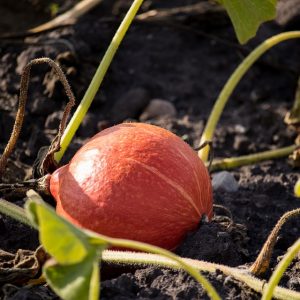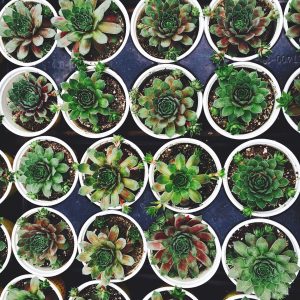Gain a Foundation Certificate in Residential Garden Planning and Care Level 2 by Distance Learning.
- This course provides a route to employment in professional horticulture by assessing knowledge of the scientific principles and underpinning horticultural practices.
- It supports career development for those already working in the profession.
- A useful qualification which provides a foundation for further learning or training in the field of horticulture
Study for a Foundation Certificate by Distance Learning.
Foundation Certificate in Residential Garden Planning and Care Level 2
- Learn garden design principles, and how to apply them.
- Gain knowledge of plant selection, establishment, and maintenance.
- Learn about lawns – turf establishment, maintenance, and renovation.
- Learn about soils, environmental considerations and weed control.
- Develop an understanding of protected cultivation, fruit production, and more.
COURSE STRUCTURE AND CONTENT
Course Duration: 150 hours.
Start Date: Start at any time – study at a pace that suits you, and with full tutor support for the duration of your studies.
Lessons: The course comprises 10 lessons which are spread across 4 units:
Unit 1: Garden features, plant selection and planning.
Unit 2: The choice, establishment and maintenance of garden plants and lawns.
Unit 3: The production of outdoor vegetables and fruit.
Unit 4: Protected environments and their use in plant cultivation.
LESSON STRUCTURE
Lesson 1. Principles of Garden Design (Unit 1)
- Introduction.
- Landscape Principles (Unity, Balance, Proportion, Harmony, Contrast, Rhythm).
- Design Elements (Line, Form, Mass, Space, Texture, Colour, Tone).
- Landscape Effects.
- Colour in Garden Design.
- Formal Gardens.
- Informal Gardens.
- Cottage Gardens.
- Minimalist Gardens.
- Natural Landscapes.
- Oriental Gardens.
- Mediterranean Gardens.
- Tropical Gardens.
- Plant Identification, Culture and Use -Reviewing a range of plants.
Lesson 2. Conducting Garden Surveys and Planning (Unit 1)
- Appraising a Site and Collecting Data for Planning.
- Components of the Pre-Planning Phase.
- Use of Hard Garden Features and Hard Surfaces.
- Scale for Landscape Plans.
- Triangulation.
- Surveying Slope.
- Direct Contouring.
- The Grid System.
- Levelling Terminology and Procedure.
- The site Plan.
- Concept Plan.
- Final Plan.
- Other Plans.
- Design Procedure.
- Landscape Graphics.
- Putting Pen to Paper.
- Lettering and Graphics.
Lesson 3. Use of Hard Garden Features and Hard Surfaces (Unit 1)
- Hard and Soft Landscaping.
- Surfaces in the Garden.
- Paving.
- Using Pebbles.
- Rockeries.
- Mulching and Erosion Matting.
- Barriers and Walls.
- Trellis.
- Types of Fencing.
- Patios.
- Seating.
- Garden Structures.
- Garden Art, Features and Furnishings.
- Pools, Ponds and Water Gardens.
- Environmental Sustainability.
Lesson 4. Use of Soft Garden Features(Unit 1)
- Choosing Plants.
- Purchasing Plants.
- Trees in the Landscape (Deciduous, Semi Deciduous, Evergreen).
- Shrubs.
- Perennials and Herbs.
- Types of Herb Gardens.
- Wildflower Meadows.
- Perennial Displays.
- Annuals.
- Flower Bed Design.
- Cottage Gardens.
- Scented Plants.
- Climbers and Growing plants on Trellis.
- Lawns and Turf varieties.
Lesson 5. Plant Establishment and Maintenance (Unit 2)
- Plants in the Landscape.
- Plant Selection.
- Environmental Factors.
- Improving Environmental Conditions.
- Selecting the Right Plant.
- Which Plant to Buy.
- Understanding Soils and Fertility.
- Plant Nutrition.
- Preparing a Garden.
- Transplanting Techniques.
- Fertilising and Staking.
- Planting Bare Rooted Plants.
- Time of Planting.
- Planting Mistakes to Avoid.
- Gardening in Dry Areas.
- Colourful Year Round Foliage.
- Establishing Annual and Herbaceous Plants.
- Seed.
- Selecting Herbaceous Plants and Bulbs.
- Dividing and Separating Perennials.
- Herbaceous Borders.
- Maximising Flower Displays.
- Selecting Woody Plants.
- Trees and Tree Health.
- Selecting Flowering Shrubs.
- Hedges.
- Climbers.
- Water Plants and Pond Management.
- Plant Health.
- Weed Management.
Lesson 6. Pruning (Unit 2)
- What, Where and Why Prune.
- Removing Dead and Diseased Wood.
- Controlling Type of Growth.
- Distinguishing between Bud Types.
- Controlling Shape and Size.
- Pruning to Rejuvenate a Plant.
- Winter Pruning.
- How to Prune.
- Pruning Different Specific Plant Genera.
- Espaliers.
- Dead Heading.
- Tree Pruning.
- Stopping, Disbudding, Root Pruning, Dead heading etc.
Lesson 7. Lawns: Establishment and Maintenance (Unit 2)
- Turf Establishment.
- Soil Preparation.
- Seeding, Stolonising, Sodding, Sprigging, Plugging.
- Mowers and Mowing Turf.
- Fertilising Turf.
- Renovation: aeration, scarification, top dressing etc.
Lesson 8. Outdoor Food Production: Vegetables (Unit 3)
- Introduction to Growing Outdoor Food Crops.
- Growing Techniques for Vegetables.
- Planning a Crop.
- Starting a Vegetable Garden.
- Managing the Crop (Weed Control, Pests, Water etc.).
- Special Techniques: No Dig, Green Manure, Cover Crops, Compost etc.).
- Sustainable Cultivation Techniques.
- Planting Techniques.
- Review of major Vegetable Crops.
- Managing Water and Irrigation.
Lesson 9. Outdoor Food Production: Fruit (Unit 3)
- Choosing a Site and Establishing an Orchard.
- Location, Climate, Rainfall and other Site Considerations.
- Deciding what to Grow.
- Scope of Fruit Growing.
- Pest and Disease Management on Fruit – Chemical and Non Chemical.
- Environmental Problems and their Management.
- Pruning Fruit Trees.
- Pollination.
- Review of Significant types of Fruits, Berries and Citrus.
- Developing a Production Plan.
Lesson 10. Protected Cultivation (Unit 4)
- Introduction to Protected Growing.
- Types of Growing Structures.
- Factors Affecting Light Transmission in Growing Structures.
- Management of Greenhouses: Benches, Hygiene, Watering, Temperature Control etc.
- Shade Houses.
- Computerised Environmental Control.
- Heating Systems.
- Controlling Light.
- Irrigation & Nutrition Control.
- Feeding Plants.
- Pest and Disease Control in Greenhouses.
- Containers for Growing in.
- Potting Media.
- Indoor Plants and their Management.
COURSE AIMS
- Develop an understanding of design principles and how to apply them – basic surveying, garden features, plant selection, garden planning.
- Develop an understanding of plant selection, establishment and maintenance of a range of ornamental plants and lawns.
- Develop an understanding of basic cultural operations and production methods for outdoor vegetable and fruit crops.
- Develop an understanding of environmental controls – uses and appropriate applications of greenhouses and other protected plant growing structures; the production of a range of plants in protected structures and the care of plants in the house and conservatory.





